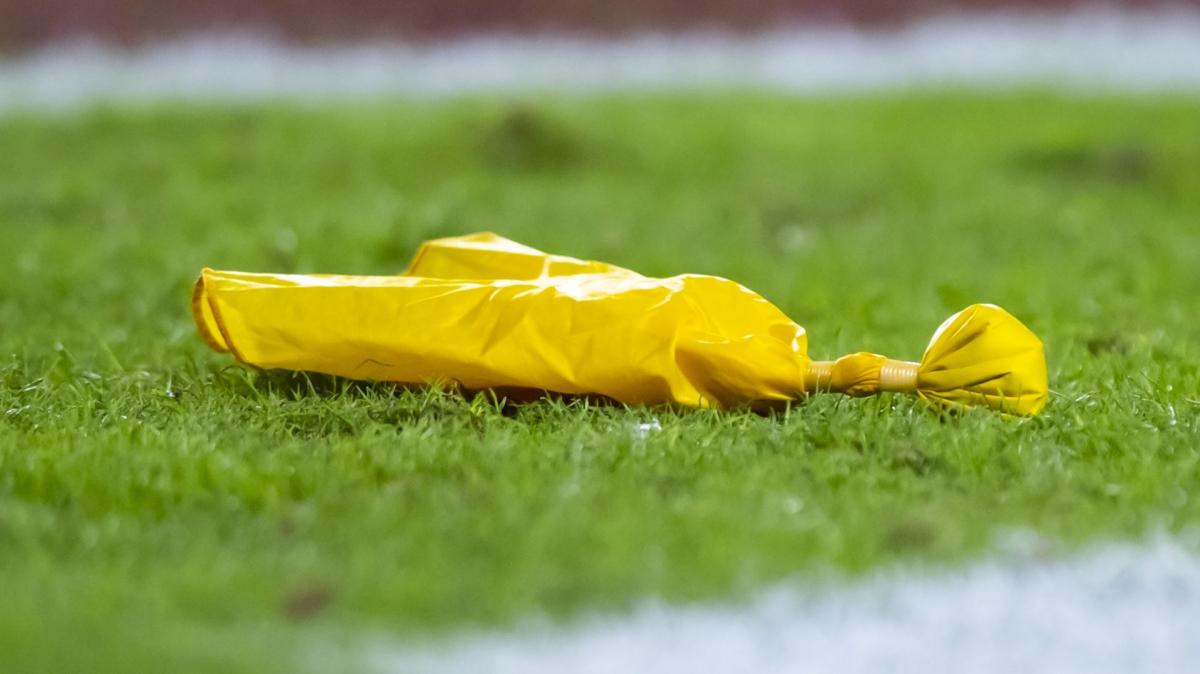
As explained in Playmakers, the NFL initially was alarmed by the NBA’s Tim Donaghy scandal. Eventually, the NFL decided that it’s impossible for one official to have enough of an impact on the outcome of a game to create any real concern that what happened to basketball could happen to football.
I’ve generally believed that, too. While it’s difficult for one official to deliver a win or a cover, there are ways for individual officials to nudge things in a given direction.
Mainly, the judgment calls provide the opening. Roughing the passer. Pass interference. Holding.
We all discovered another one last night, thanks to the away-from-the-ball, inconsequential illegal formation foul on Commanders receiver Terry McLaurin. Anyone who pays any reasonably close attention to football at any level knows that wideouts routinely communicate with officials to get in the right position, confirming that they are or aren’t lined up on or off the ball.
“Obligation” or not, the closest official typically assists with the process. And for good reason. The players want to be properly lined up. And the officials don’t want to bog the game down with hypertechnical fouls regarding the pre-snap positioning of players on the fringes of the play.
Also, beyond the question of whether the pattern and practice has created a de facto obligation to help is the question of whether officials should ever affirmatively mislead receivers, by acting as if everything is fine when the player isn’t properly aligned.
Watch the video from last night. There’s something very strange about it. McLaurin seeks input, and he acts as if he got the input he was looking for. (We can only see the interaction; we can’t hear what was said.) Meanwhile, the official at one point puts his hand on his flag, lying in wait to nullify the outcome of the play.
And this wasn’t a first and 10 at midfield. This was a short-yardage, goal-line situation. The flag that the official seemingly couldn’t wait to throw took the potential game-tying touchdown off the board.
Is it ultimately on the player to be in the right spot? Yes. But an official with a history of helping should be expected to continue to do so. At a minimum, the official should be expected to not create the false impression that the player is properly in place — while resting his hand on the flag like a cowboy getting ready to draw and fire his six-shooter.
Whatever the explanation, it’s a bad look for the NFL, because it demonstrates that, yes, Virginia (and Maryland and D.C.), there is a pathway for serious officiating shenanigans.
I continue to believe the NFL isn’t rigged, in the sense that the NFL doesn’t ever “want” specific teams to win or lose. I worry that a given official could, given the prevalence and ease of legalized gambling, get sufficiently swept up in it to corrupt objectivity and fairness.
And, frankly, it’s exhausting to be on the front line of trying to tell fans who think that, for example, the league office doesn’t want Daniel Snyder’s team in the playoffs.
The league office doesn’t have to fight those battles. There’s no public accountability. It makes none of its employees available for meaningful interrogation. The pool reporters typically ask the right questions, but the league official who is interviewed immediately after the game says whatever needs to be said to get past the issue, while the league awaits the next bright, shiny object that will change the subject.
At some point, there will be a controversy sufficiently significant to prevent the subject from being changed by the next game on the schedule. Here’s hoping the NFL wakes up and cleans up its backyard before that happens.
Penalty on Terry McLaurin is a very bad look for the NFL originally appeared on Pro Football Talk
